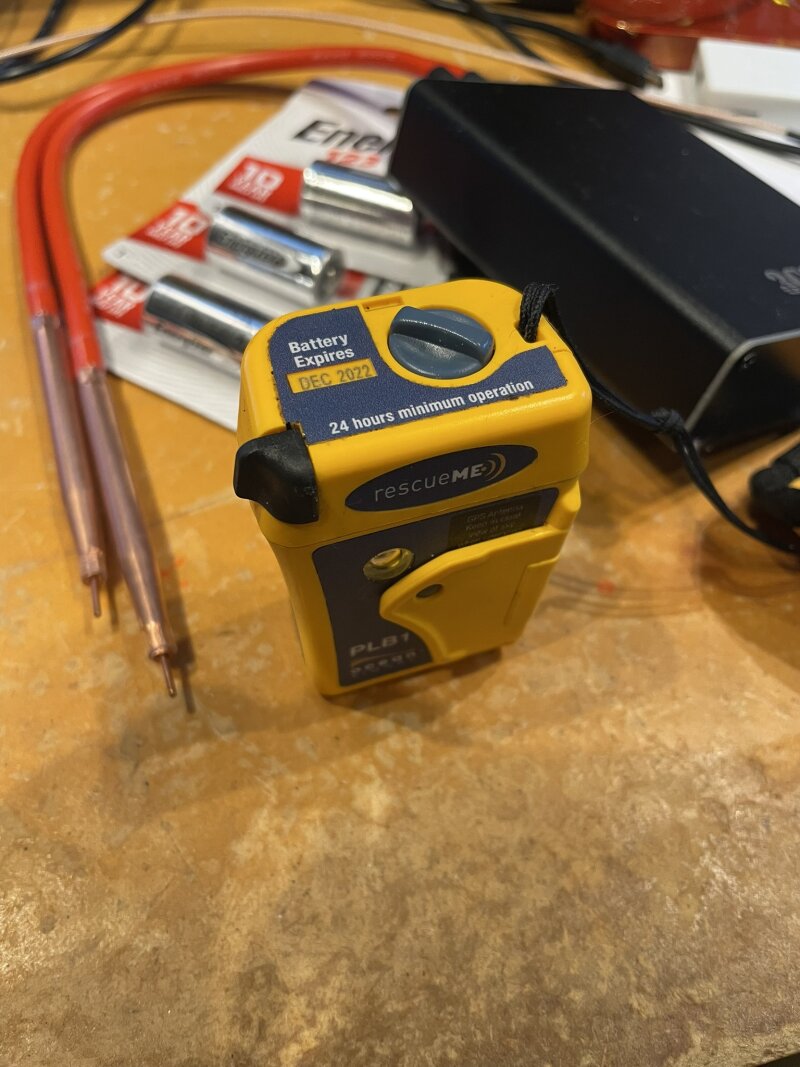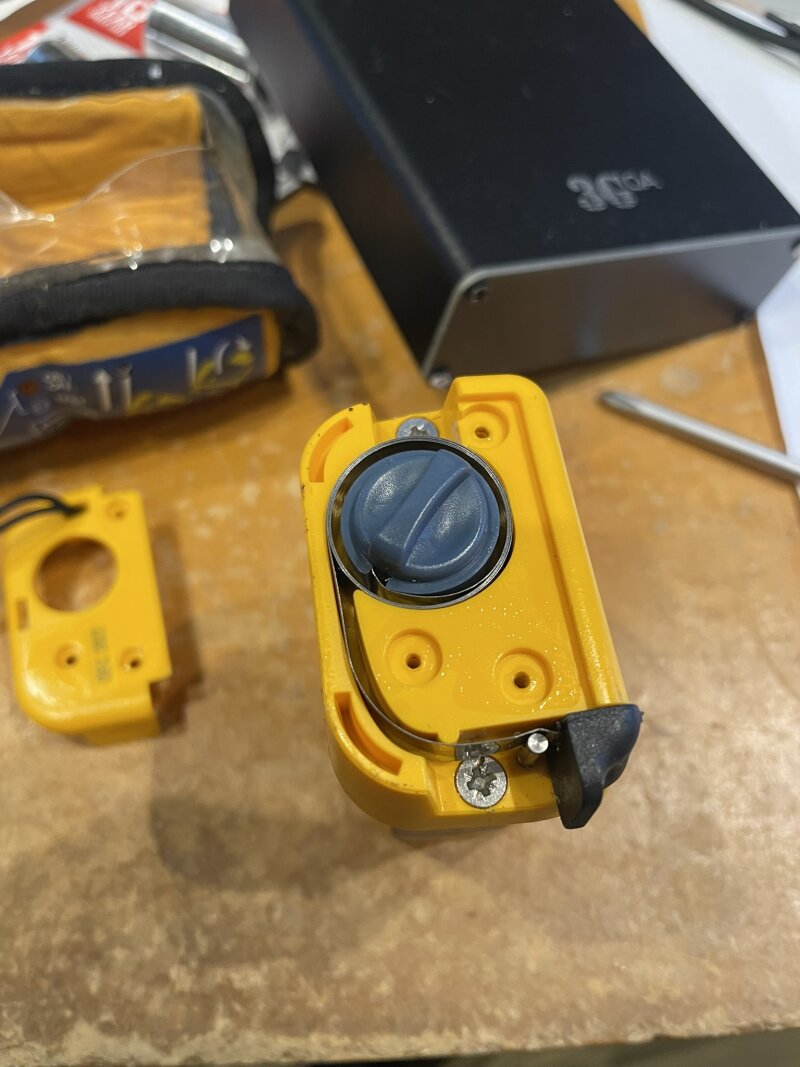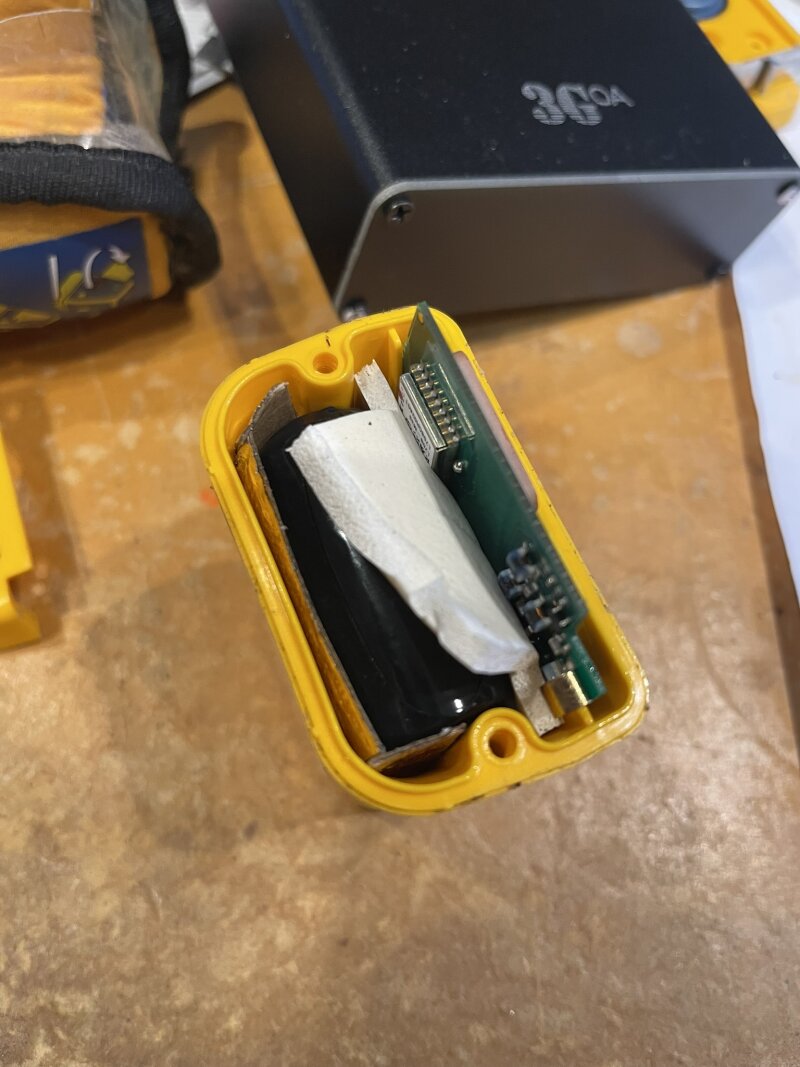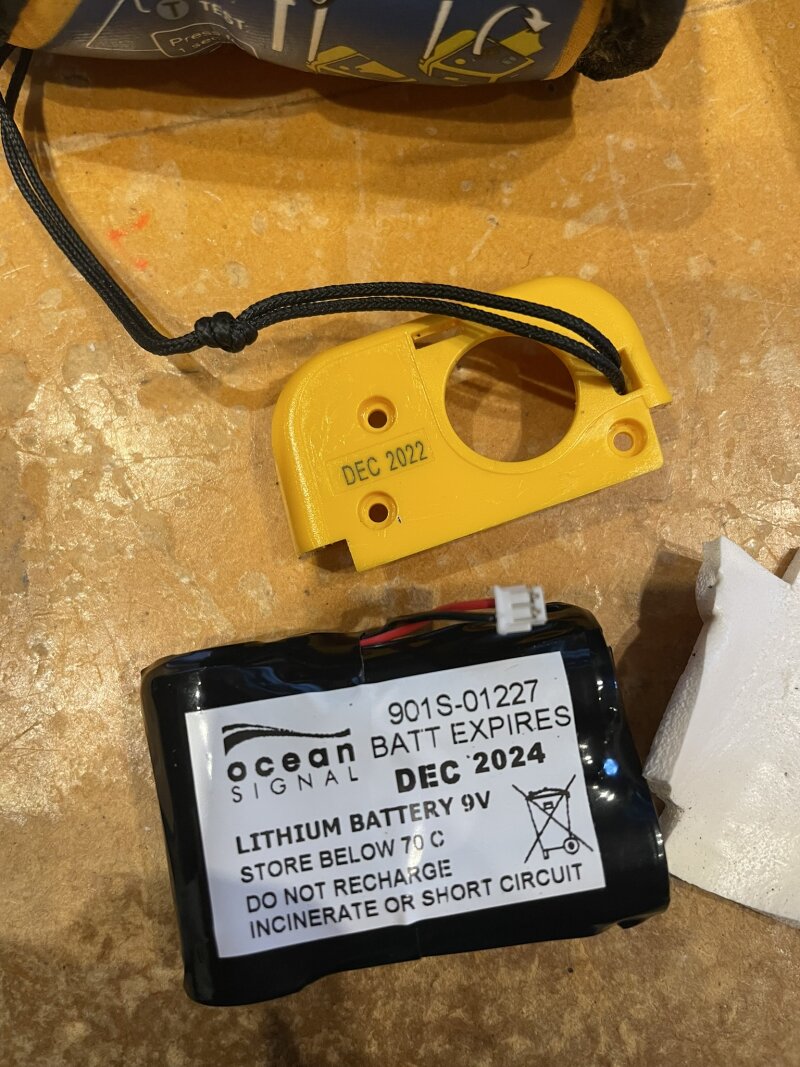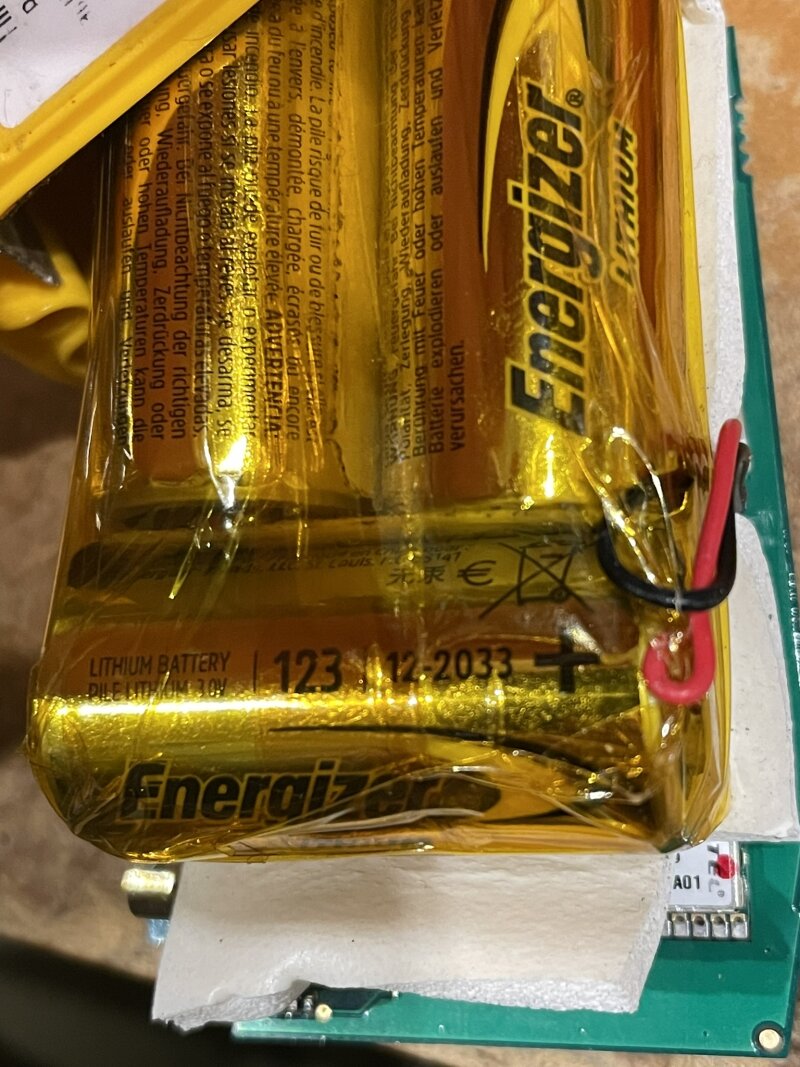OceanSignal PLB1 Battery Replacement
A few months back I inherited a Personal Locator Beacon (PLB) from a friend, and in the process of updating the registration I noticed that it was (over) due for a battery replacement. Fortunately, before spending ~NZ$260 on having the battery replaced through the official route, I found this thread and wound up spending about NZ$60 on a trademe spot welder and NZ$69 for 3 new 123-size lithium batteries at The Warehouse.
The process is pretty straightforward - basically just take the PLB apart using a Pozidriv screwdriver (or a Phillips), redo the battery pack with new cells (or, purchase a new pack from somewhere like BBR), and put it all back together (ideally with a bit of silicone grease on the gasket). The main difficulties I encountered were in holding the under-construction battery pack in position while spot welding, and ensuring that the circuit board inserted properly with the foam grounding shield in the case - unfortunately I didn’t get a photo of either.
Sidetrack About Risk
Some folks seem to find the idea of a DIY PLB battery swap to be uncomfortable on safety grounds; personally I think that if the swap is done competently then the additional risk is negligible. This is not to say that the reliability of the PLB itself is unchanged; the professional approach almost certainly is better. Just in my personal risk accounting the reliability of the PLB itself is not that important.
On adventures where I might carry a PLB, there’s a spectrum of possible mishaps ranging from very minor -ran out of podcasts- to very severe -head crushed by 50T boulder- and there’s some window within that band where it would be appropriate to push the PLB emergency button. I’m not in a position to quantify that window, but in my experience it seems fairly small; I can’t think of any situation I’ve encountered where I would’ve pushed the button (this is my first PLB), but at least two of my friends have had life saving/altering rescues enabled through PLBs. For argument, assume there’s a 1:10,000 chance that a trip will include a mishap in this window; if changing my own battery reduces the PLB reliability from 99.9% to 90% (probably very conservative, considering the PLB has a self-test function), then there’s something like a 1:100,000 chance that my trip will have a mishap that would’ve been less bad if my PLB had the battery professionally changed. This calculation also ignores some complications that make the case stronger: if I’m carrying a PLB then there’s a good chance someone else nearby is too, and even if a PLB makes contact there’s no guarantee that a helicopter will be able to get to the scene (there’s correlation here, for instance bad weather increases the chance of mishaps and decreases helicopter availability), cell phones will soon have better emergency comms features than a PLB does.
All this is to say that, if safety is the concern I think it’s better to spend that marginal NZ$130 (or NZ$190 if not buying a spot welder) on gear (perhaps toward an InReach) or training - so that the PLB is less likely to be required.
